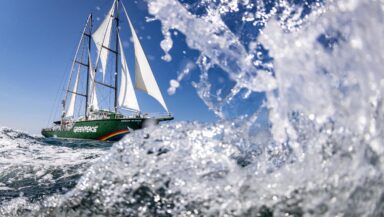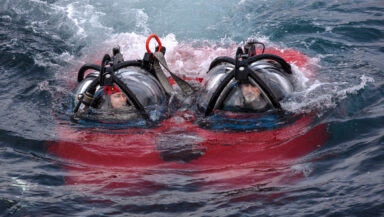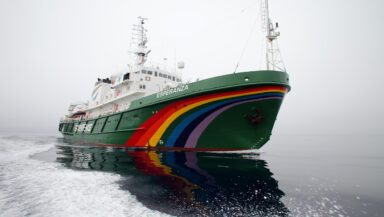Erected by Greenpeace activists, the one ton sculpture of a mother chinstrap penguin and her chick was installed to highlight the threats to marine life as part of a global call by Greenpeace for greater action on ocean protection.
Chris Thorne, Greenpeace Oceans Campaigner said;
“We want to send a clear message to the Government and to the public that time is running out to save our oceans. We have seen first-hand how climate change, plastics pollution and industrial fishing are killing marine life in our oceans. A Greenpeace team in Antarctica is reporting that chinstrap penguin populations there are disappearing at an alarming rate.”
From Seoul to London, Buenos Aires to Cape Town, penguin ice sculptures have appeared in public spaces in capital cities across nearly every continent. The ice sculptures were created to boost Greenpeace’s campaign for a strong Global Ocean Treaty that will lead to much greater protection for marine life. [See images here]
The ice sculpture in London was designed by a team from Icebox – a world leader in the ice-carving industry. It will take four people two hours to transport and erect the pre-carved sections of the sculpture to the Thames shoreline, where it will be installed at low-tide, in front of the Tate Modern on Southbank. With St, Pauls Cathedral and the skyline of the City of London behind them, the pair of penguins will be slowly submerged beneath the rising tide, eventually melting away into the river.
Will McCallum, Head of Oceans at Greenpeace UK said;
“Rising sea-levels and warming oceans pose a significant threat to the future of marine species. The impacts of climate change, together with plastic pollution and industrial fishing have pushed our oceans into crisis. Six out of seven species of sea turtles are facing extinction. Millions of sharks are killed by industrial fishing every year and whales are washing up with stomachs full of plastic.”
“Governments must urgently create safe sanctuaries for wildlife to recover from the threats they are facing. To do that they first need to agree a Global Ocean Treaty at the UN this year. We hope the UK will be sending a minister to the negotiations. This would assert Britain’s leadership role in ocean protection and galvanise others to support a strong treaty.”
The Greenpeace ships Arctic Sunrise and Esperanza are currently in the Antarctic on the final leg of an almost-year-long pole to pole expedition researching threats to the ocean. Research teams exploring the impact of climate change, plastic pollution and industrial fishing on Antarctic wildlife were joined by campaigners and award-winning actors Marion Cotillard, Ni Ni and Gustaf Skarsgård who are helping to raise awareness of the campaign.
Governments will meet at the UN for the fourth round of negotiations towards a Global Ocean Treaty in late March. Greenpeace is campaigning for an ambitious treaty which allows for the creation of a network of ocean sanctuaries, free from harmful human activity, which scientists say is needed across 30% of the world’s oceans by 2030 in order to allow wildlife populations to recover.
ENDS
Photo and video: An image gallery with photos of the penguin ice sculptures, as well as ocean wildlife, See images here
Notes:
[1] Greenpeace is calling for a network of ocean sanctuaries covering at least a third of the world’s oceans by 2030, a target called for by scientists at the International Union for Conservation of Nature (IUCN) and welcomed by a growing number of governments. For more information: Protect the Global Oceans: Why We Need a Global Ocean Treaty. For a detailed policy briefing see here.
[2] Pole to Pole Expedition: See here for a map of the pole to pole expedition route.
Contacts:
Patrick Fuller, Press Officer, Greenpeace UK, patrick.fuller@greenpeace.org – 07377730878



